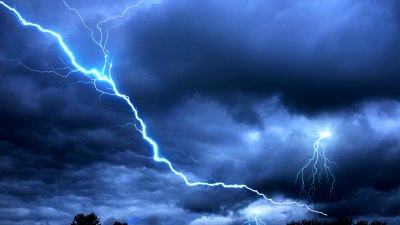How Weather Balloons Collect Data at 100,000 Feet
Explore the technology and methods weather balloons use to gather atmospheric data at altitudes up to 100,000 feet.

Weather balloons have long been an essential tool in meteorology, providing invaluable data about Earth's atmosphere. Unlike satellites or ground-based instruments, these balloons can rise to astonishing heights, often reaching altitudes around 100,000 feet (about 30 kilometers), where they collect vital information that helps scientists understand weather patterns, climate, and atmospheric conditions. This article delves into how weather balloons operate, the technology they use, and the process by which they collect data at such elevated altitudes.
At the outset, it's important to understand the basic structure and purpose of weather balloons. Typically made from latex or synthetic rubber, these balloons are designed to expand as they ascend through the atmosphere. Starting with a diameter of about 2 meters at launch, they can stretch to over 8 meters at their peak altitude due to the decreasing atmospheric pressure. The balloons are filled with lighter-than-air gases such as helium or hydrogen, providing the lift needed to carry instruments skyward.
Attached beneath the balloon is a device known as a radiosonde. This compact instrument package measures various atmospheric parameters including temperature, humidity, pressure, and wind speed. The radiosonde transmits this data back to ground stations via radio signals in real time. The information gathered is crucial for weather forecasting models and climate research.
The ascent of a weather balloon is carefully planned and executed. Ground crews select a clear day and a suitable launch site to minimize interference and ensure accurate data collection. Before launch, the balloon is partially filled with gas, and the radiosonde’s sensors are calibrated. Once released, the balloon rises at an average rate of approximately 300 meters per minute.
As the balloon climbs through the troposphere and into the stratosphere, atmospheric pressure decreases significantly. This reduction allows the balloon to expand naturally. At an altitude of about 100,000 feet, the balloon reaches near its maximum diameter and eventually bursts due to overstretching. This burst marks the end of the ascent phase and the beginning of the descent.
The radiosonde is equipped with a small parachute that deploys upon balloon burst, allowing it to descend slowly back to Earth. This careful descent ensures the instrument package is recovered with minimal damage and can sometimes be reused. The parachute also prevents the radiosonde from falling too quickly, which could harm people or property on the ground. Meanwhile, throughout the descent, the radiosonde continues transmitting valuable atmospheric data, further enriching the dataset collected.
One of the remarkable features of radiosondes is their ability to capture accurate wind data. By tracking the radiosonde's position via GPS or radar from the ground, meteorologists determine wind speed and direction at different altitudes. This data is pivotal for aviation safety and for understanding storm dynamics and other weather phenomena.
The success of weather balloons in reaching extreme altitudes and transmitting data hinges on several engineering designs. The material used for balloons must be elastic yet durable, capable of withstanding low temperatures and expanding without rupturing prematurely. Similarly, radiosondes are designed to function reliably in harsh conditions, including subzero temperatures and near-vacuum pressure.
In recent decades, advances in microelectronics and GPS technology have greatly enhanced radiosonde capabilities. These instruments now provide high-resolution data with greater accuracy than ever before. Moreover, improvements in telemetry systems have extended the range and reliability of data transmission, ensuring that meteorological centers receive continuous updates throughout the balloon’s flight.
Weather balloons are indispensable in providing vertical profiles of the atmosphere—a key component for initializing numerical weather prediction models. They supply data from layers of the atmosphere that are otherwise difficult to monitor consistently. Unlike satellites, which primarily capture horizontal and surface-level data, weather balloons sample the vertical structure, capturing changes in humidity, temperature, and wind at various altitudes.
The information collected by weather balloons supports multiple sectors including agriculture, aviation, emergency management, and climate science. For example, by understanding temperature and moisture distribution at high altitudes, farmers can anticipate frost events or drought conditions. Pilots rely on wind data to adjust flight routes and improve safety. Emergency responders use weather predictions based on balloon data to prepare for hurricanes, tornadoes, and other severe weather events.
Weather balloons also provide insights into phenomena occurring in the stratosphere, such as ozone concentration and ultraviolet radiation levels. These measurements are crucial for monitoring the ozone layer's health and assessing the impact of human activities on atmospheric composition.
Despite the rise of sophisticated satellite technology, weather balloons continue to play a complementary role. Satellites offer broad coverage but are limited in vertical resolution and often cannot capture detailed atmospheric sounding at specific points. Weather balloons fill this gap, delivering precise vertical profiles essential for model accuracy and validation.
The deployment of weather balloons is a global effort coordinated by meteorological agencies and research institutions. In many countries, regular balloon launches occur twice daily, forming a worldwide network that monitors the atmosphere continuously. This consistent sampling contributes to improved weather forecasts and better understanding of global climate trends.
In addition to standard management, specialized weather balloons are used for scientific research exploring extreme weather conditions or atmospheric phenomena. Some balloons feature advanced sensors designed to sample pollutants, aerosols, or even cosmic rays in the upper atmosphere.
Operating at 100,000 feet poses unique challenges. For one, the temperature at such altitudes can plummet to -70 degrees Celsius or lower, testing the resilience of the equipment. Power supply for radiosondes typically comes from compact batteries that must operate reliably in these cold temperatures. Thermal insulation and energy-efficient components are crucial to maximize operational time.
The balloon’s ascent also reveals vital atmospheric layers. For instance, the tropopause—the boundary between the troposphere and stratosphere—is identifiable by a change in temperature gradient. Collecting data across these layers helps meteorologists understand jet streams, weather fronts, and atmospheric stability.
As the balloon climbs, it also passes through regions of varying humidity and pressure. The dynamic readings captured help create a three-dimensional picture of atmospheric conditions that influence weather development. These vertical profiles can also assist climate scientists in studying long-term atmospheric changes.
Innovations in balloon design continue to push the limits of how high and how long these instruments can operate. Some research balloons have ventured even higher than 100,000 feet, reaching near-space altitudes exceeding 120,000 feet. These missions contribute to space weather studies and planetary boundary research.
The controlled burst altitude and predictable descent enable efficient recovery of radiosondes. Many organizations encourage the public to report recovered instruments, which helps track and improve balloon flights. Recovered radiosondes may also be refurbished for future use, reducing waste and cost.
Safety protocols are meticulously followed during balloon launches. Operators coordinate with aviation authorities to ensure that balloon trajectories do not interfere with aircraft. Notices to airmen (NOTAMs) are issued in advance to alert pilots to nearby balloon activity.
In summary, weather balloons are simple yet sophisticated tools that have remained vital to atmospheric science for over a century. Their ability to ascend to approximately 100,000 feet, expand under low pressure, and transmit a wealth of meteorological data makes them unparalleled instruments for acquiring high-altitude observations. Through continuous innovation, these balloons help scientists deepen our understanding of weather and climate and improve forecasting accuracy worldwide.
The enduring legacy of weather balloons lies in their unique capacity to bridge the gap between Earth's surface and near space, providing critical data that no other technology can match completely. They embody a blend of robust engineering, precise measurement, and real-time data transmission that continues to power the meteorological community's efforts to predict and understand the atmosphere.
Understanding how weather balloons operate at extreme altitudes enhances appreciation for their role in daily weather forecasts and scientific discovery alike. As technology advances, these gentle giants of the sky will continue to ascend, gathering the atmospheric insights vital to life on Earth.











